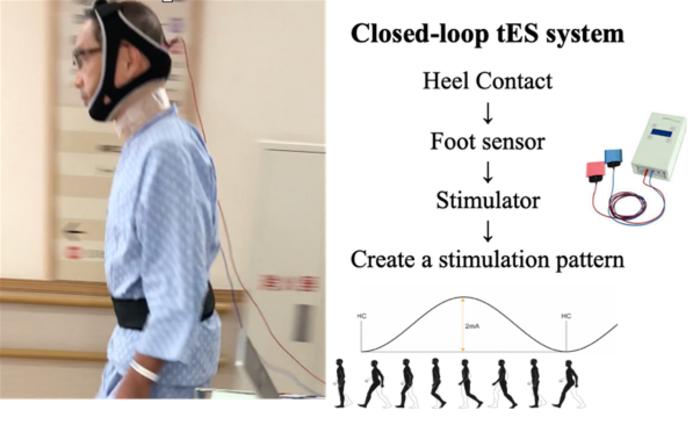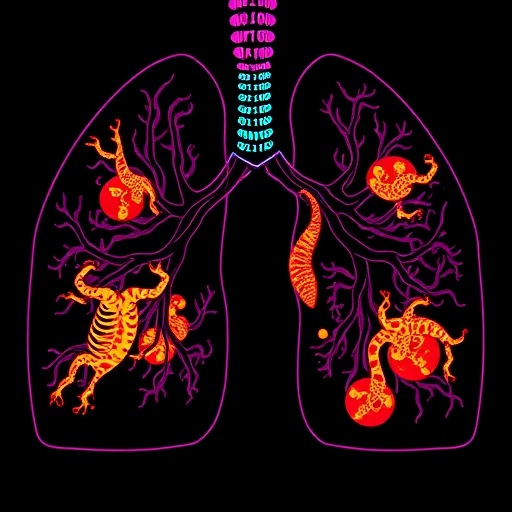Gait-related disturbances adversely affect the quality of life of patients with Parkinson’s disease (PD), a condition affecting millions worldwide. Although various pharmacological, surgical, and rehabilitative treatments exist, their effectiveness is limited. Now, a team of researchers from Japan has successfully addressed this limitation. Using a novel neuromodulation approach that incorporates gait-combined closed-loop transcranial electrical stimulation, the team demonstrated significant gait improvements in patients with various neurological disorders including PD.

Credit: Ippei Nojima
Gait-related disturbances adversely affect the quality of life of patients with Parkinson’s disease (PD), a condition affecting millions worldwide. Although various pharmacological, surgical, and rehabilitative treatments exist, their effectiveness is limited. Now, a team of researchers from Japan has successfully addressed this limitation. Using a novel neuromodulation approach that incorporates gait-combined closed-loop transcranial electrical stimulation, the team demonstrated significant gait improvements in patients with various neurological disorders including PD.
Parkinson’s disease (PD) is a debilitating neurodegenerative disease characterized by motor function decline, particularly in relation to gait disorders. These gait disorders manifest as decreased step length, reduced arm swing, slow movements, rigidity, and postural instability, which are prevalent among patients with PD. While non-pharmacological approaches like transcranial direct current stimulation show promise in improving motor function, recent research focuses on gait-combined closed-loop stimulation, which synchronizes brain stimulation with the individual’s gait rhythm. A recent study published on 9 June 2023 in the Journal of Neurology, Neurosurgery & Psychiatry proposes a novel intervention for gait improvement, thus creating new hope for patients with PD.
“We recently developed a novel neuromodulation approach using gait-combined closed-loop transcranial electrical stimulation (tES) and demonstrated promising gait improvements in patients who are post-stroke. Here, we tested the efficacy of this intervention in patients with Parkinsonian gait disturbances,” explains lead author Ippei Nojima from Shinshu University and Nagoya City University, Japan.
To this end, the clinical researchers from Japan recruited twenty-three patients with PD or Parkinson’s syndrome. All study participants were randomly assigned to receive either the active treatment or a “sham” treatment that mimics the active treatment but does not offer any therapeutic benefit.
During the course of the trial, an electrode carrying a low current (up to 2 mA) was externally affixed to the occipital region of the head. A reference electrode was then placed in the neck region to establish a stable electrical reference point and to complete the electrical circuit. The treatment included performing tES on the cerebellum in a non-invasive manner. The brain side showing severe impact was specifically targeted during the electrotherapy.
“Gait disturbance lowers activities of daily living in patients with PD and related disorders. However, the effectiveness of pharmacological, surgical, and rehabilitative treatments is limited. Our novel intervention might be able to improve physical function for not just patients with PD but also for those with other disabilities,” comments senior author Yoshino Ueki from the Department of Rehabilitation Medicine at Nagoya City University.
The cerebellum plays a key role in gate control. Therefore, the electrical stimulation of this region is likely to exert therapeutic benefits. The therapy showed encouraging results after just ten repetitions. The treatment group showed a significant improvement in gait parameters including speed, gait symmetry, and stride length.
Says Professor Nojima, “These findings showed that gait-combined closed-loop tES over the cerebellum improved Parkinsonian gait disturbances, possibly through the modulation of brain networks generating gait rhythms.”
Interestingly, no patient dropped out during the study. Moreover, patients from both the groups (treatment and sham) showed good and comparable compliance. Side effects such as skin irritation, vertigo, or odd sensations/perceptions were also not observed in any of the volunteering patients. This study has special significance, considering the fact that Japan is witnessing a sharp rise in its elderly population.
“Patients with impacted gait have restricted daily activities. We successfully developed a new non-pharmacological and non-invasive intervention for the rehabilitation of patients with PD and other neurological disorders. Our breakthrough method could be used to restore gait in these patients,” concludes Professor Ueki.
Although the study has certain limitations, it suggests that the personalized brain stimulation, synchronized with individual gait rhythm, can effectively enhance gait function in PD and has the potential to be used as an adjunct therapy for gait rehabilitation.
# # #
About Shinshu University
Shinshu University is a national university founded in 1949 located nestling under the Japanese Alps in Nagano known for its stunning natural landscapes. Our motto, “Powered by Nature – strengthening our network with society and applying nature to create innovative solutions for a better tomorrow” reflects the mission of fostering promising creative professionals and deepening the collaborative relationship with local communities, which leads up to our contribution to regional development by innovation in various fields. We’re working on providing solutions for building sustainable society through interdisciplinary research fields: material science (carbon, fiber and composites), biomedical science (for intractable diseases and preventive medicine) and mountain science, and aiming to boost research and innovation capability through collaborative projects with distinguished researchers from the world. For more information visit https://www.shinshu-u.ac.jp/english/ or follow us on Twitter @ShinshuUni for our latest news.
Journal
Journal of Neurology Neurosurgery & Psychiatry
DOI
10.1136/jnnp-2022-329966
Method of Research
Randomized controlled/clinical trial
Subject of Research
People
Article Title
Gait-combined closed-loop brain stimulation can improve walking dynamics in Parkinsonian gait disturbances: a randomised-control trial
Article Publication Date
9-Jun-2023
COI Statement
The authors do not declare any competing interests.




